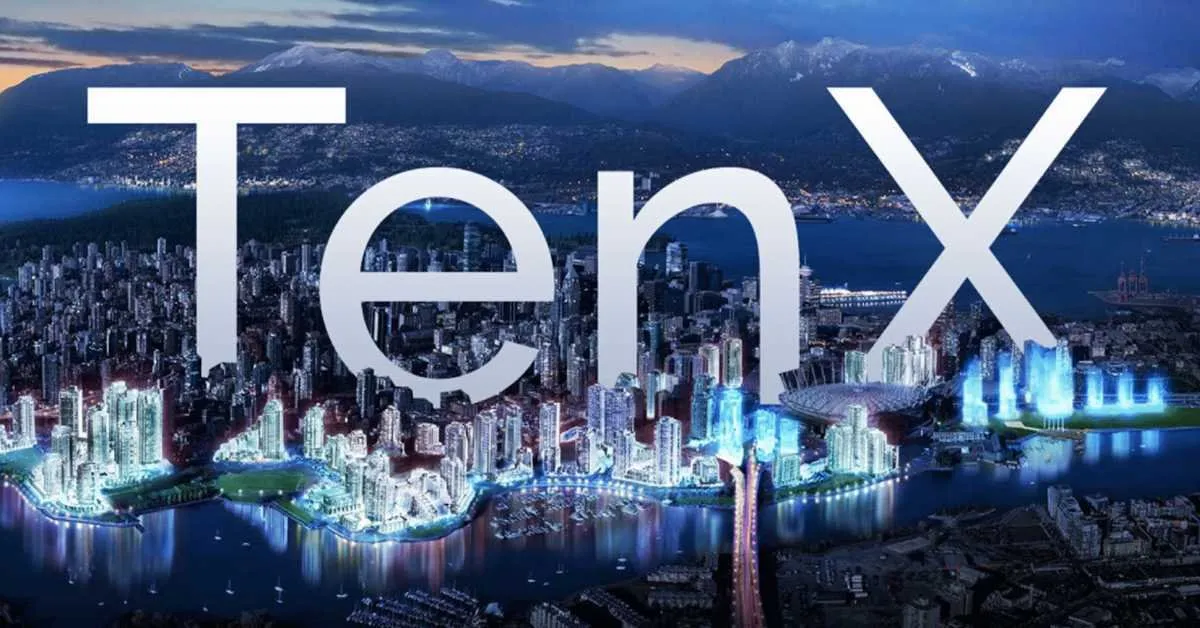
What is TenX?
TenX is a digital wallet and physical card that you can use to spend cryptocurrency at any store – even if they don’t accept crypto.
You may have noticed that you’ve accumulated all of these coins but don’t have many places available to spend them. Besides Overstock.com and maybe a shop or two around town, your options are pretty limited.
TenX is on a mission to change that.
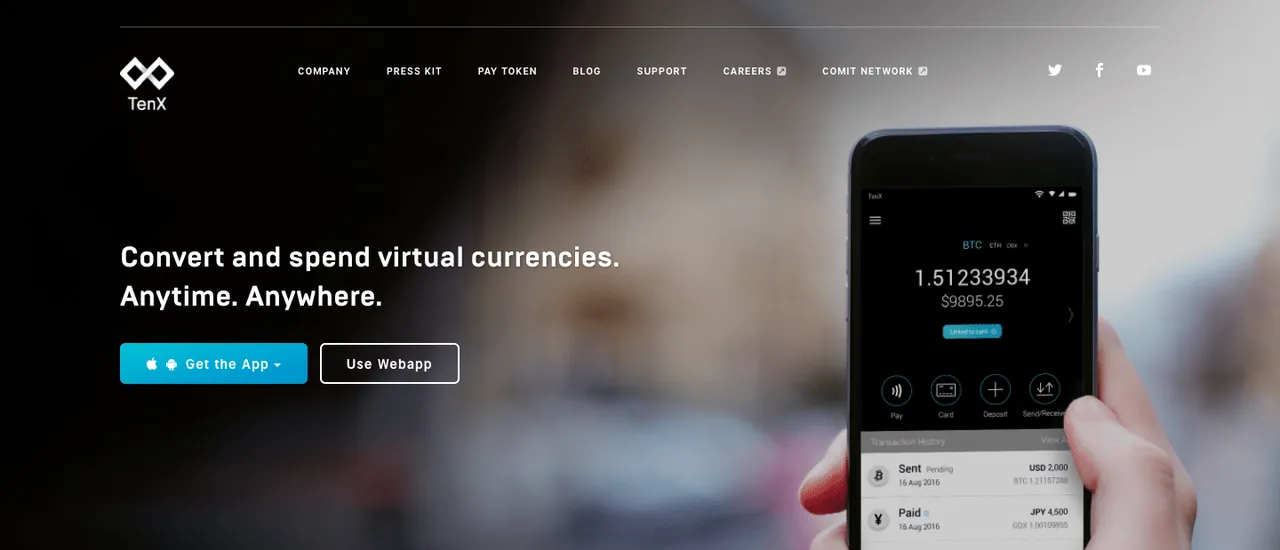
In this TenX guide, we’re going to cover:
- How does TenX work?
- What’s the COMIT Network?
- TenX fees & rewards
- Some TenX history
- Token Supply
- Trading
- Where to buy PAY
- Where to store PAY
- My opinion
- Additional TenX resources
How does TenX work?
The mission of the TenX team is to make “any blockchain asset spendable instantly.” To do this, they’ve built a wallet and card system on top of the COMIT network – a routing protocol that enables payments across blockchains.TenX Wallet
The TenX wallet is available on Android, iOS, and web. This multi-currency wallet currently only supports Bitcoin but will soon include Ethereum, Dash, and all ERC20 tokens as well.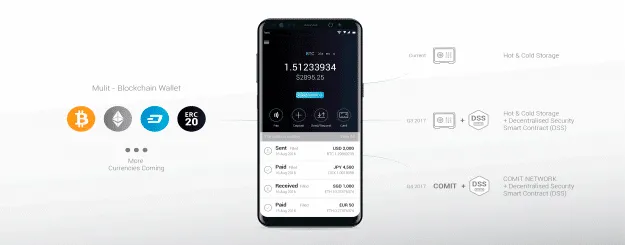
You’re not able to access your wallet’s private keys for now, but they’re in good hands. TenX stores them in a mixture of hot (online) and cold (offline) storage solutions that are on par with industry standards. Once the wallet is integrated with the COMIT network at the end of 2017, you’ll have full control of your private keys.
TenX Transactions
You can make transactions by using either the TenX app or a physical TenX debit card. Unlike some other crypto cards, all of your coin assets remain as crypto up until the time you actually make a transaction.
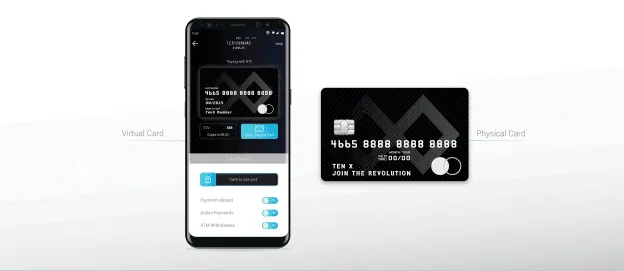
Decentralized Security Smart Contracts (DSS)
Using a DSS, you can set spending rules for your card and have further control of your funds. You can set purchase limits, daily spending limits, and withdrawal limits.
You can also choose a portfolio of coins to use for spending. For example, you could arrange that each purchase will be split into 50% Bitcoin, 25% Ethereum, and 25% Dash.
TenX Payment Platform
Starting in Q3 2018, TenX will be releasing developer tools for start-ups, businesses, and merchants to tie into the COMIT network. This will help TenX to expand beyond just debit cards and experiment with other asset classes like ETFs and derivatives.
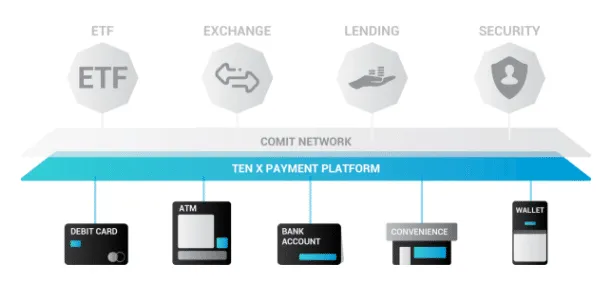
Making the COMIT platform available to the public will also lead to new services such as exchanges and lending programs.
What’s the COMIT Network?
TenX is integrated with the COMIT (Cryptographically-secure Off-chain Multi-asset Instant Transaction) network. Although created by the same people behind TenX, the COMIT network has an entirely different website and whitepaper.
The goal of the COMIT network is to allow any new blockchain to connect to an existing blockchain by using the COMIT Routing Protocol (CRP) – a set of standards that outlines how the different blockchains communicate with one another. This is similar to how the Internet is connected across the globe through the TCP/IP protocol.
With the successful implementation of the COMIT network, you’ll be able to exchange one asset for another (crypto-to-crypto or crypto-to-fiat) instantaneously for almost zero transaction fees.
For a blockchain to be compatible with the COMIT network, it needs to have these attributes:
- Double-spend protection
- Multisig
- Timelocks
- Hash function
A COMIT Transaction
To make a transaction, a User (U) needs to use a wallet that’s connected to the COMIT network. The Business (B) where the User is spending their funds also needs to have a payment provider that is connected to the COMIT network.When the User makes a transaction at an approved Business, the transaction is passed along through a network of Liquidity Providers (LPs) to determine which LP has the best exchange rate.
An LP operates across blockchains and provides liquidity to the exchanges between the different currencies.
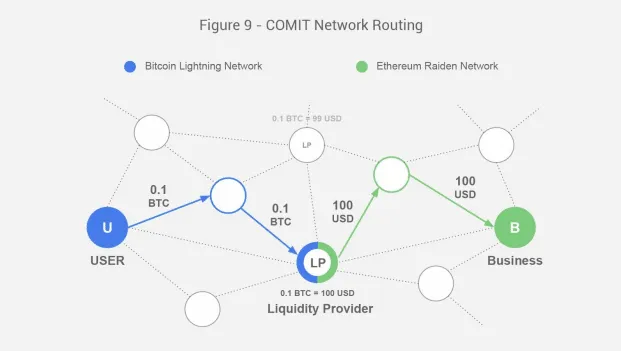
For a more detailed explanation of how the COMIT network works, please check out the whitepaper.
TenX fees & rewards
TenX has no transaction fees. You’re only charged a one-time issuing fee of $15 for the physical cardand $1.50 for the digital card. There’s also no annual fee to use the card unless you spend less than $1000 in a year. If you don’t hit that minimum, you’ll be charged $10.
TenX provides two ways to earn rewards:
- Holding PAY tokens
- Using the TenX card
Similar to most credit cards, you also receive a 0.1% reward each time you use the TenX card. This reward is paid to you in PAY tokens which can either be held to receive the reward mentioned earlier or sold on the open market.
Some TenX history
The TenX team released their final whitepaper and started their token sale at the end of June.
Headquartered in Singapore, the team was founded by Toby Hoenisch, Dr. Julian Hosp, Michael Sperk, and Paul Kitti. Hoenisch, Dr. Hosp, and Kitti also worked together to develop the whitepaperfor the COMIT network.
Fenbushi Capital, a major blockchain venture capital firm with Vitalik Buterin as a general partner, is an investor in TenX.

There are a few other companies attempting to build cryptocurrency debit card systems as well including Token, Monaco, and Centra. Each card has a different reward structure benefitting different types of use-cases. TenX is unique in that it’s the only one being built using the COMIT network and COMIT cross-channel payments.
In my opinion, there doesn’t need to be a single winner in the crypto card space. Just as we have multiple credit and debit card options in the traditional finance system, there’s room for multiple options in the crypto with different pros and cons tailored to the different types of spenders.
Token supply
There are currently a little under 105 million PAY tokens circulating in the market. This represents 51% of the tokens that will ever exist in the market.
An additional 29% (or ~59.5 million) will enter the market over the next 4 years to fund community initiatives, business development, and academic research to further enhance the product.
Of the last 20%, half will be reserved as an asset in the company while the other half will be used to compensate the TenX founders and employees over a 4 year vesting period.
No more tokens will be created beyond these.
Trading
The TenX PAY token spiked to an all-time high of $5.60 (0.00147972 BTC) in August of this year. The dramatic rise in price was caused by the issuance of a large batch of debit cards as well as the PAY token finally being listed on Yunbi – one of the largest China-based crypto exchanges.
Since then, the price has slowly and steadily fallen to the $1.50 – $2.00 range with small positive movements towards the end of November. These recent rises don’t seem to be associated with any news in particular.
The TenX card isn’t currently available to US residents. Once it does become available, it wouldn’t be unreasonable to imagine an increase in the PAY token price.
Where to buy PAY
PAY is available for purchase using Bitcoin, Ethereum, or Tether on several major exchanges such as Bittrex and Huobi.
I suggest that you first purchase Bitcoin on either GDAX or Gemini and then transfer it to Bittrex. Bittrex has the largest PAY trading volume of the exchanges and its most popular pairing is with Bitcoin.
You can check out CoinMarketCap for a complete list of the exchanges that PAY is available on.
Where to store PAY
It’s recommended you store your PAY tokens on a hardware wallet that has support for ERC20 tokens like Trezor or the Ledger Nano S.
Another option for storage is MyEtherWallet where you can move your tokens to an offline paper wallet.
The TenX wallet does not support ERC20 tokens yet but will soon. The company has already started beta testing the feature on individual wallets and will be releasing an update with support shortly.
Final Thoughts
Although the team doesn’t have as much previous crypto experience as I’ve seen on other projects, there’s something to be said that Vitalik Buterin, creator of Ethereum, is an investor. After reading through both the TenX and COMIT whitepapers, I’m confident that the leadership team not only has a solid technical plan but has a good business strategy as well to bring this project to life.
The only reservation I have about this project is how regulators around the world are going to treat transactions using the TenX card (specifically in the United States). This is still very much a grey area with some people speculating that each transaction could be seen as a taxable event.
That being said, if you’re familiar with ARK, you might start to develop a fondness for projects that are working to bridge the gap between new blockchain technologies and traditional systems. TenX is no different.
I’m looking forward to the release of the TenX card in the U.S., so I can further my transition into an entirely crypto world.
Additional TenX resources
Blog
Youtube Channel
This article was first published by Steven Buchko at Coincentral
The Block Crypt have been granted permission from Coincentral.com to publish this post.
Original post : https://theblockcrypt.com/altcoins/tenx/what-is-tenx-beginners-guide/